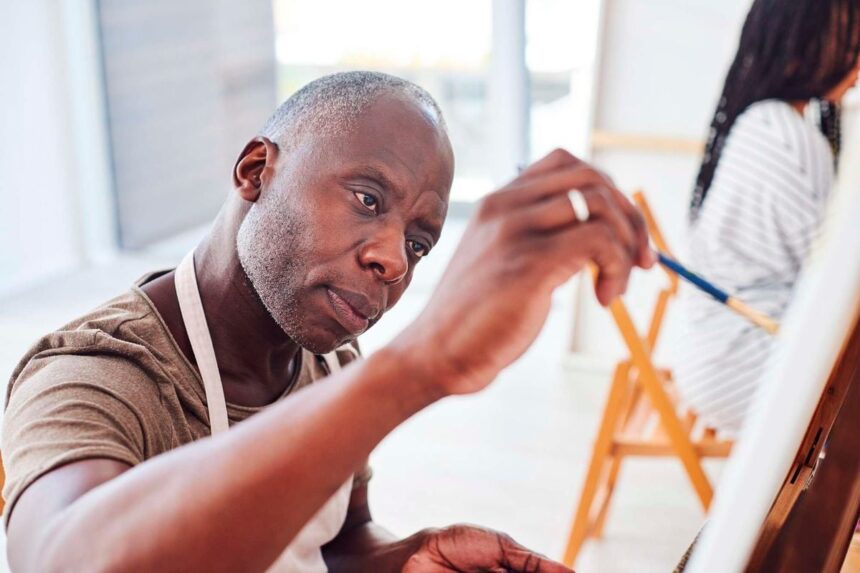
Doctors and nurses rarely learn in school how to tell families that their loved ones are not going to live. However, health care professionals face the burden of tragedy, illness and death in highly stressful situations as an ongoing routine.
Before the Covid-19 pandemic, research documented stress and burnout among healthcare professionals.
The effects of this crisis are spreading in the US In 2022, Surgeon General Dr. Vivek Murthy is concerned about the alarming level of burnout in the health care community in the midst of the Covid-19 pandemic.
Studies show that if current trends continue, the US will have a shortage of 1.1 million registered nurses, three million other healthcare workers and more than 140,000 doctors by 2033.
The Mayo Clinic 2022 study reported that only 58 percent of physicians would choose to become a physician again if given the opportunity to reconsider their career choice, down from 72 percent from just a year earlier.
For almost two decades, our research group – a team of doctors, researchers, creative arts therapists and writers – has focused on understanding the impact of work-related stress on healthcare workers.
In our experience, almost every healthcare worker has a story about navigating a time when the weight of the profession is simply too much to bear.
As doctors who have worked in critical care and emergency medicine for many years, we think that the incorporation of creativity in health care is important.
The health of the nation depends on the well-being of the health workforce. We believe that combining creativity and art as a tool to build the resilience of health workers can help shift the culture of emotional isolation that health workers live in.
Challenges ahead
We as health workers push ourselves to learn new ways to improve human health. The irony is that this often comes at the expense of our own physical, emotional and mental health.
We learn to mask our emotions and internalize all the negative events we see in health care. But that is not sustainable.
In the 2000s, up to 80 percent of critical care nurses reported experiencing burnout or some other form of psychological distress.
This contributes to a high turnover rate, with 67 percent of nurses planning to leave their position within three years. This has led to rising health care costs, compassion fatigue among workers and reduced quality of care for patients.
Then came the Covid-19 pandemic, which increased the stress on health workers: 3 out of 5 doctors reported burnout during the omicron variant height in 2022.
The combination of higher work demands, workload, work complexity, work pressure and intensive work time during the Covid-19 pandemic increases stress among health care professionals and leads to emotional exhaustion.
Satisfaction with work-life balance dropped from 46.1 percent in 2020 to 30.2 percent in 2021.
In the post-Covid-19 era, healthcare workers like us are at higher risk for anxiety, depression and post-traumatic stress disorder.
Health care professionals who are burned out are less likely to seek professional care and, as a result, tend to experience higher rates of substance use, depression and suicidal thoughts.
Art is the way forward
In ancient Greece and Rome, participation in the arts was “given” to people with depression or anxiety. Additionally, for centuries, tribal communities have used dance, music and art to facilitate physical and mental healing in individuals.
Our focus has been on teaching health workers how to use artmaking to effectively process trauma and develop coping mechanisms through expression and community.
We invite participants, who include doctors, nurses, social workers, therapists and researchers, to express their authentic vulnerability and share stories that are not usually told using pen and paper, brushes, guitars, songwriting and movement.
From 2020 to 2023, we are conducting six cohorts of a 12-week clinical trial of a creative arts therapy intervention involving health care professionals working at least half-time.
Participants were randomly assigned to one of four creative arts therapy groups: art, music, dance/movement and writing, with 12 weekly sessions lasting 90 minutes each.
We measured levels of anxiety, depression, burnout, post-traumatic stress disorder (PTSD) and job satisfaction through a validated questionnaire and asked the same questions again after the conclusion of the intervention. We also measured these scores in a control group that did not participate in the intervention.
The results were eye-opening. Study participants experienced less burnout and expressed a lower desire to leave their jobs.
Burnout scores for anxiety, depression, PTSD and emotional exhaustion decreased by 28 percent, 36 percent, 26 percent and 12 percent, respectively, in participants who received the creative arts therapy intervention. These improvements persisted up to one year after completion of the program.
Our findings add to the growing body of evidence that creative arts therapy can be an effective tool to address health workforce burnout worldwide.
We believe that creative arts therapy is effective because it allows health care professionals this imperfection – the freedom to heal themselves.
They can use this opportunity to speak the unspeakable through the art form, which is a vehicle to explore and recover from trauma.
It can also increase your tolerance for imperfection as well as help you feel grace and compassion for yourself and each other. It develops emotional vocabulary and, thus, builds resilience.
Remember what it means to be human
Although the role of doctors, nurses and other health professionals is often glorified through terms such as “superheroes” and “guardian angels,” the reality is that they are human beings who make mistakes and are also tired.
The creative process invites them to remember what it means to be human, to be vulnerable.
A health care professional takes up the paintbrush for the first time since kindergarten to explore feelings that have been suppressed, memories that have been buried – and even forgiveness for mistakes they may have continued for years.
One of the participants in the program wrote his feedback: “When I am given the space to unmask and show all sides, I am creative and involved. I think more deeply and clearly.
I prefer to take the risks necessary to achieve a breakthrough. I am a better colleague, mentor, friend, partner, and scientist. When I feel safe and supported, I heal.
Marc Moss is Professor of Medicine at the University of Colorado Anschutz Medical Campus
Rafaela Mantelli is a Program Manager at the Colorado Endurance Arts Lab, and a Researcher in Pulmonary Sciences and Critical Care Medicine




